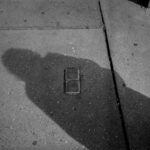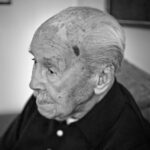Between 1941 and 1945, nearly two-thirds of Hungary’s Jewish population was destroyed. More than half a million people fell victim to forced labor, deportations organized by German Nazis and their Hungarian collaborators, death marches, mass executions, and the horrors of concentration camps. From July 1941, Hungarian authorities deported approximately 16,000-18,000 Jews to the German-occupied eastern territories. In late August, in the Kamenetz-Podolsk area, the SS shot around 15,000 people into mass graves. Of those deported, at most 2,000 returned to Hungary. Meanwhile, the Holocaust raged across much of German-occupied Europe.
On March 19, 1944, German troops occupied Hungary to prevent the Hungarian government from withdrawing from the war. On October 15, the Germans brought Ferenc Szálasi’s Arrow Cross movement to power, and the „Final Solution to the Jewish Question” began in Hungary. Between November and December, Szálasi deported about 50,000 Jews and forced laborers from Budapest to Germany, most of them driven on foot into the collapsing Reich. The ghettoization and deportation of Hungary’s Jewish population, which numbered between 760,000 and 780,000, could not have been carried out without the active cooperation of Hungarian authorities. Between mid-April and the end of May, nearly the entire Jewish population of the country was confined to ghettos and collection camps. In Budapest, terror became a constant in the ghetto: Arrow Cross gunmen murdered thousands of Jews.
Between May 15 and July 9, 1944, in the largest deportation operation of the Holocaust, around 430,000 Jews were deported, most of them to Auschwitz-Birkenau. The speed with which the Hungarian authorities expelled, robbed, and deported Jews was unparalleled even in the history of the Holocaust. The survivors of the ghettos were liberated in January 1945, and those in concentration camps were freed by Allied forces in the spring of 1945.




















